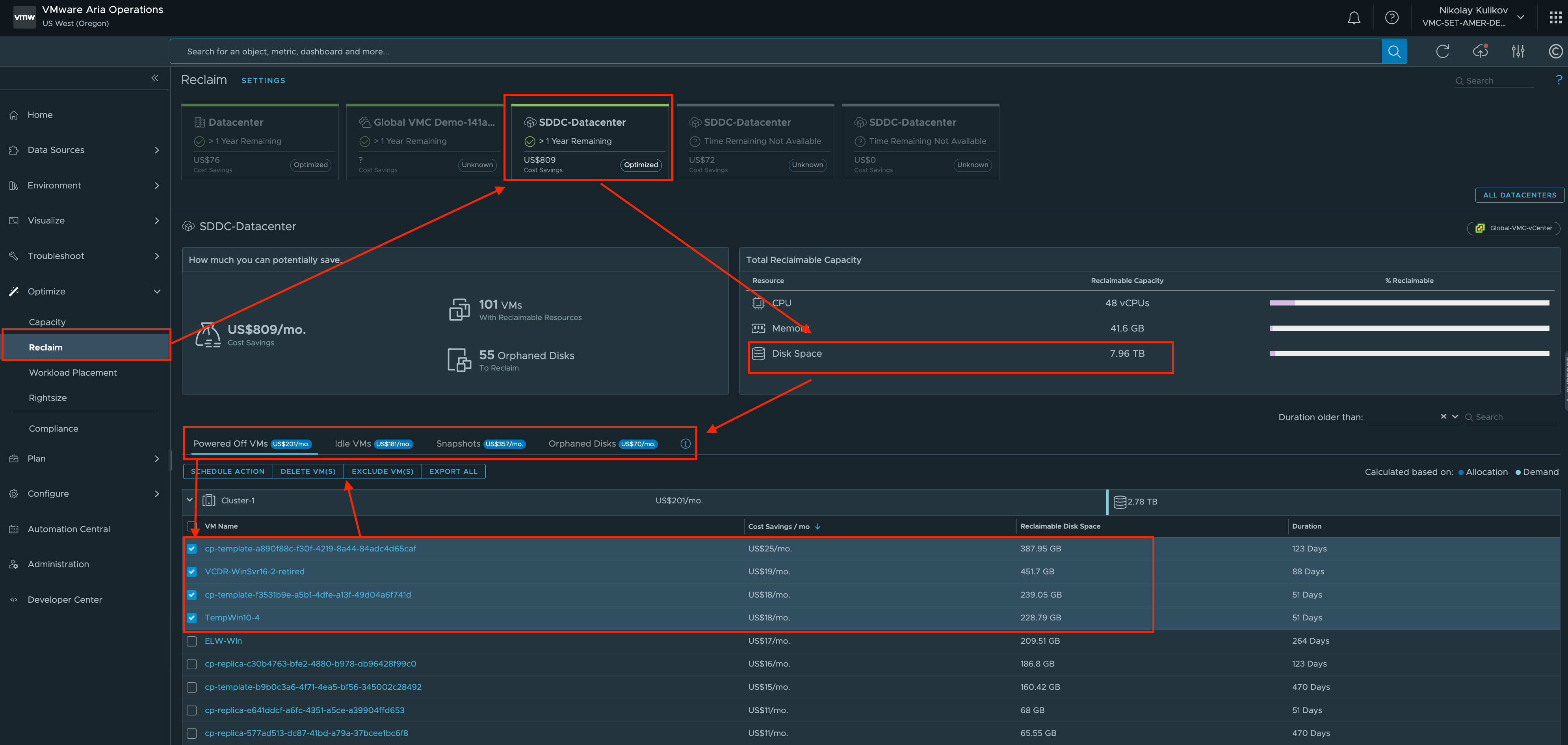VMware Cloud on AWS Optimizations in Storage-bounded environments. Part 2. Optimize VMC on AWS infrastructure.

So, we come to the second part. You've done all the steps in part one, but you still need more space (or you realize that you can reduce the number of hosts from a Compute perspective, but not Storage). Then you need to start optimizing the VMC on AWS infrastructure itself. There will be 3 main steps here, just like in the last article - optimize storage policies, optimize host types and vSAN, and optimize clusters.
VMware Cloud on AWS Optimizations in Storage-bounded environments. Part 1. Reduce amount of data you store.

It's no secret that many infrastructures in VMC on AWS are bounded by storage capacity rather than compute resources. That is, the number of hosts is determined by the usable capacity requirements on the cluster, while there are spare/free compute resources. This relationship follows directly from the fact that VMC on AWS utilizes VMware vSAN-based hyperconverged infrastructure as its primary storage, and therefore there is an explicit capacity/compute resource ratio. That said, there are three types of nodes available in VMC on AWS (or even two if we're talking about Reserved Instances since i3 is now available only on demand) and these ratios are not always exactly what is required. Within this article I would like to talk about what...